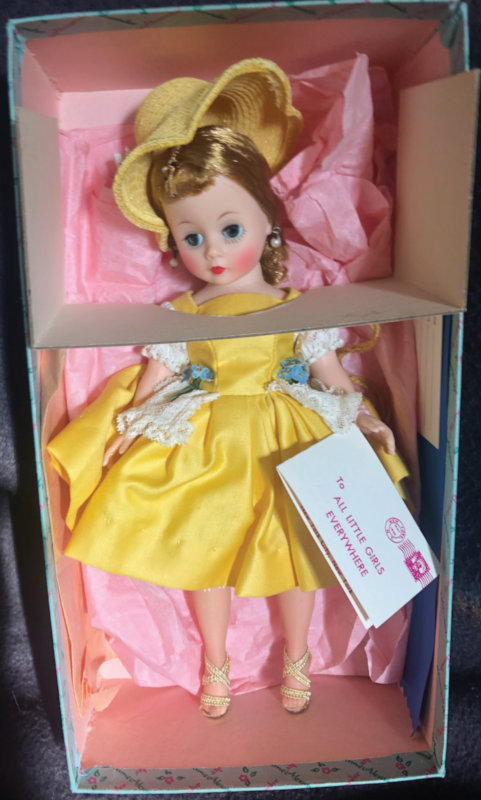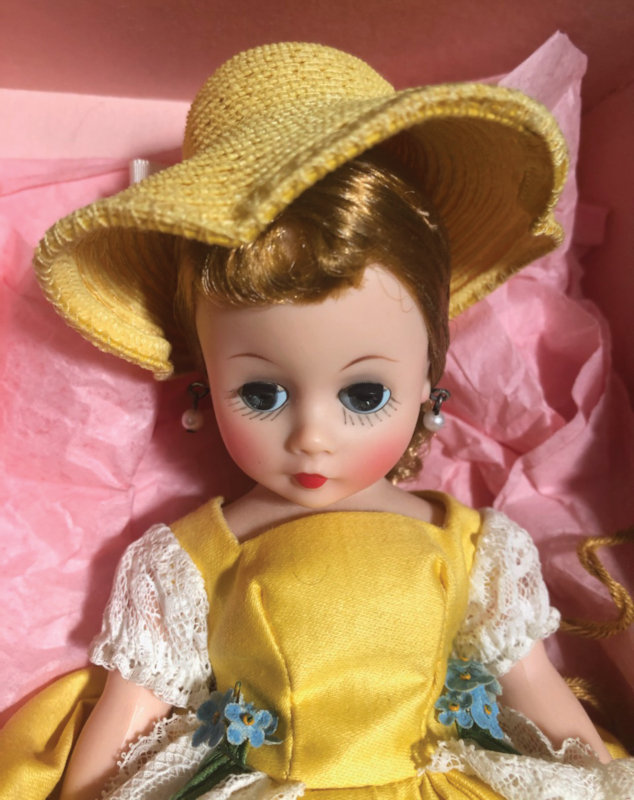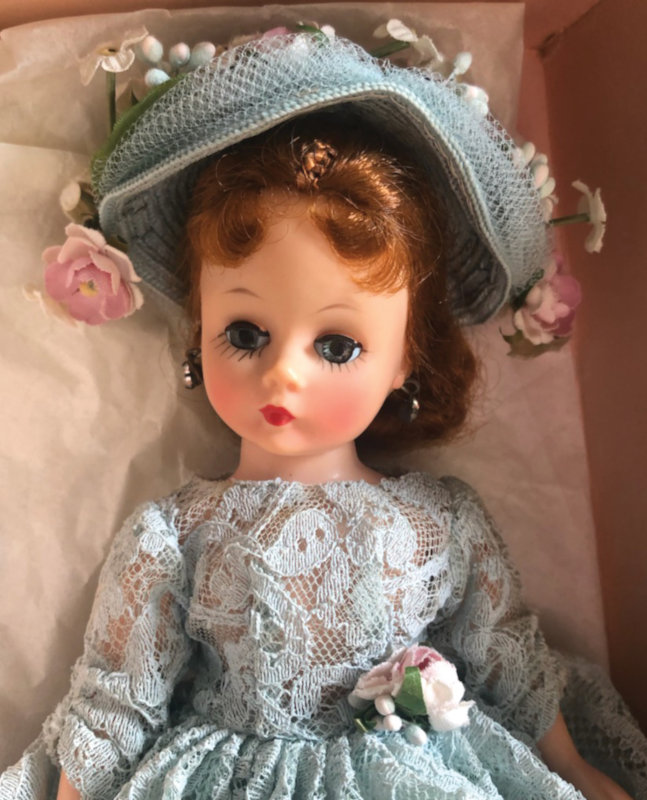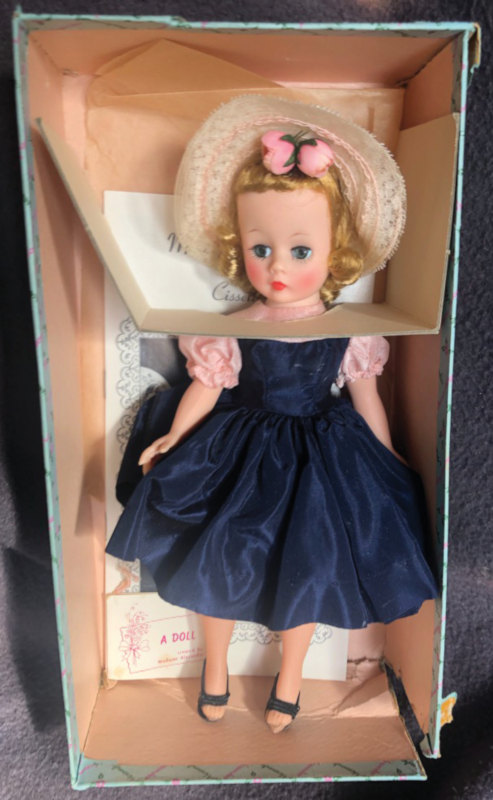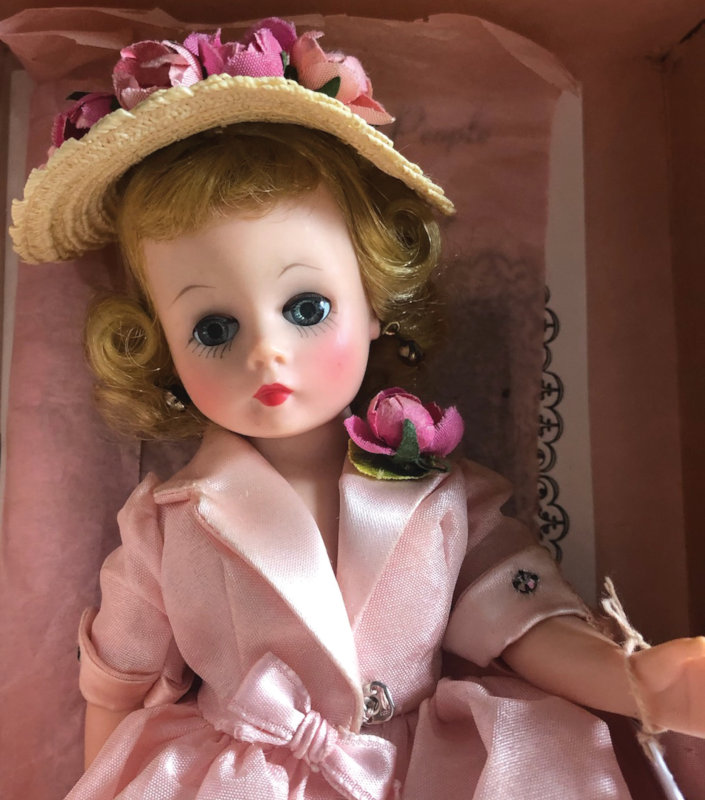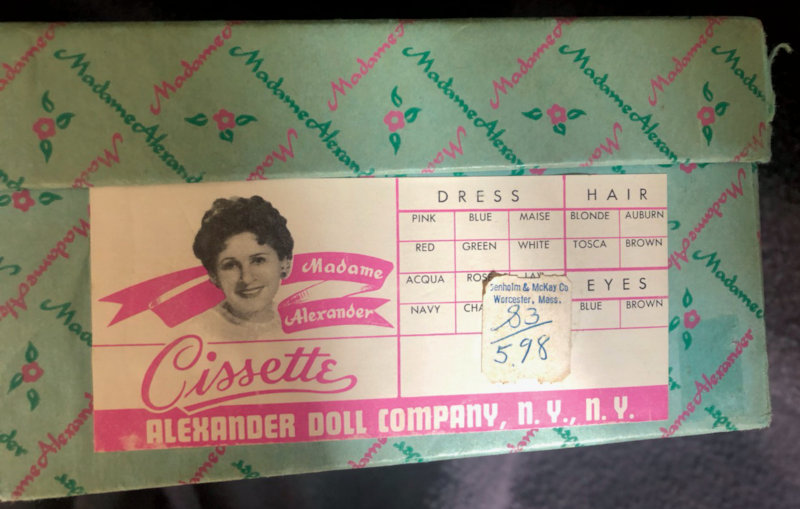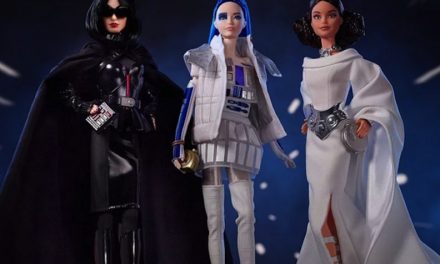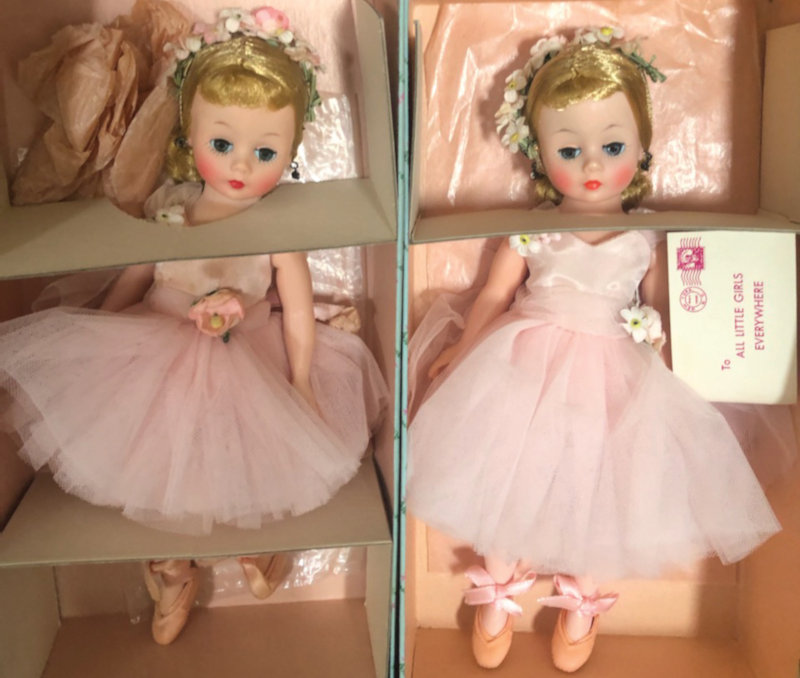
By A. Glenn Mandeville
Once upon a time — in 1955, to be exact — Madame Alexander issued a 21-inch debutante doll with a full figure, arched high-heel feet, and a wardrobe the likes of which had never been seen before. Her name was Cissy, and she would forever change the way children and the doll industry looked at dolls. Previously most dolls were made in the likeness of a child, such as Betsy McCall, Ginny, and many others.
Baby boomer children, up until the mid-1950s, seemed content to play with dolls that reflected their daily lives as children, but this generation of children were growing up and approaching their teenage years. They really needed guidance to navigate the waters of teendom, and the “big sister” type of doll quickly caught on.
Madame Alexander was leading the pack with Cissy. But the cost and the large size of these fashion dolls did not suit the budget or the space available in many households. So in 1957, dollmakers scaled down to 10.5-inch fashion dolls (see Growing by Inches below). From the largest manufacturer to the smallest, the competition to create the most lavish fashions and accessories for this new doll size was heated.
Naturally, Madame Alexander introduced her own 10.5-inch fashion doll — Cissette. As in decades past, when Madame Alexander entered the doll race, it was always with the most expensive and lavish entry, and Cissette was no exception. Available in department stores with stunning toy departments, Cissette was the elite entry among the smaller fashion dolls.
From the very beginning, Cissette was the doll destined to be cherished and eventually become the darling of collectors who adored these smaller fashion dolls. The basic dolls came dressed in a chemise with nylon stockings and petite high-heel slippers. Also available were additional boxed outfits and complete dressed dolls, as well as gift sets and store specials, especially for Madam’s beloved FAO Schwarz.
While many dolls seemed too perfect to play with, examples of this hard plastic doll comforted many a child perhaps intimidated by the thought of becoming an adult. Added to the exclusivity of Madame Alexander dolls was the fact that Madame Alexander considered advertising her dolls on the new medium of television to be, in her words, vulgar. This philosophy would eventually hinder the company, as Mattel did not hesitate to promote its Barbie doll on TV.
In the late 1950s the 10.5-inch fashion doll was overwhelmingly popular. However, although at first not taken seriously by competitors, Barbie would forever change the fashion-doll standard to 11.5 inches, not to mention changing the way children viewed dolls as not just playthings but friends that they could relate to.
By 1961 Madame Alexander was valiantly trying to save Cissette’s dominance by updating her wardrobe with realistic outfits such as swimsuits and boating ensembles. The company also introduced new dolls using the same body but with either an historic look or a “best friend” type of doll. By 1963, even Madame Alexander had to admit that not only was the Barbie doll scale now the biggest game in town but that storyline and associated items such as books, paper dolls, and more gave a personality to Barbie that other dolls did not have.
FAO Schwarz would continue with lavish and expensive gift sets for Cissette to satisfy high-end customers, but it would be years before manufacturers revisited that size again. But Cissette made her mark as well as cherished memories for both children and collectors, and the Alexander Doll Company continues to release new Cissette designs to delight today’s collectors.
Growing by Inches
From the late 1950s the industry standard for a full-figured high-heel fashion doll was approximately 10.5 inches. Many manufacturers entered the so-called miniature fashion doll race. Some entries were Cosmopolitan’s Miss Ginger, Vogue’s Jan and Jill, and of course Ideal’s Crown Princess and Little Miss Revlon. Others included Miss Nancy Ann and the Cody Girl.
Many lesser manufacturers also entered the miniature fashion doll race, sometimes with dolls made by name companies and marked only with the letter “P” in a circle on the head. This standard would remain in place until 1961, when it was evident Barbie’s 11.5-inch height was becoming the new standard.
From then on, most small fashion dolls on the market were made with the same type of figure as Barbie had and competed for a piece of the fashion doll market. Eventually all succumbed to the inevitable — Barbie was Queen of the Prom. This body standard is still the most common fashion doll in use today.
A. Glenn Mandeville is the author of numerous books on dolls and doll collecting and writes his Curious Collector column for each issue of DOLLS magazine. Send your queries about vintage and modern dolls, with photos, to Curious Collector.
Subscribe now to get access to DOLLS online archive of past issues!

